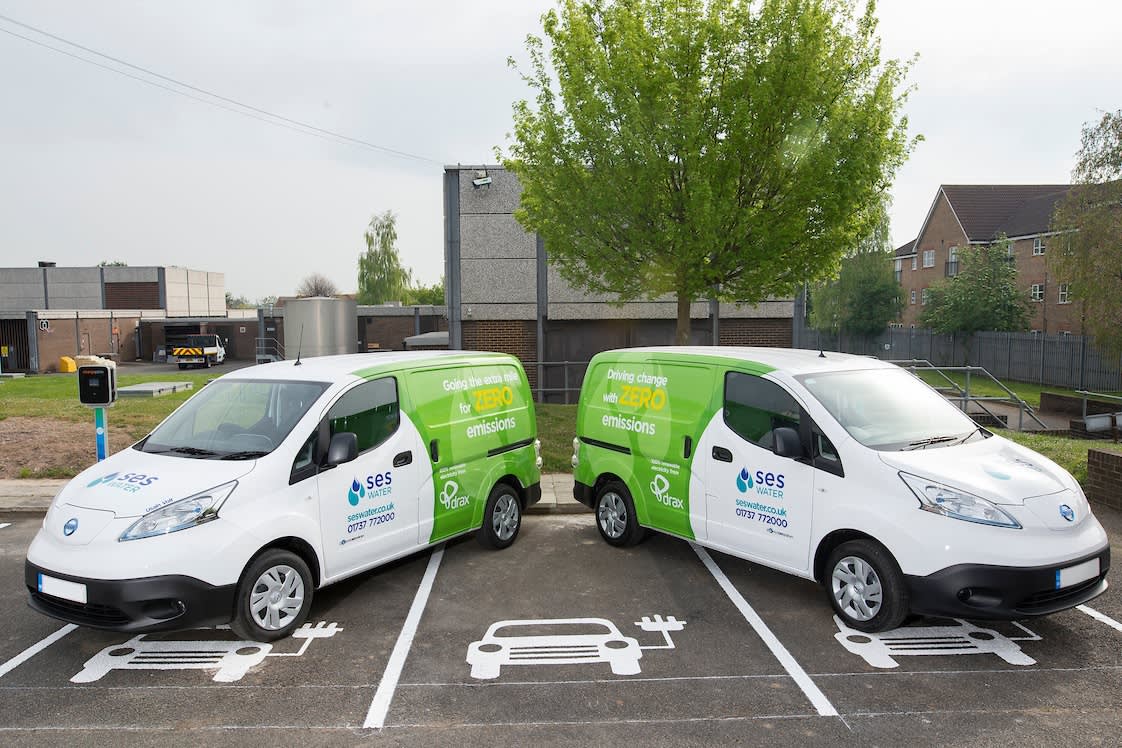Drax driving emissions cuts for SES Water with electric vehicles
We’re making it simple for businesses to make the switch to EVs. With our end-to-end proposition, we’re helping SES Water to reduce their carbon emissions.
Our first EV customer, SES Water made an initial investment in 16 new charging points and replaced 10 of its 120 strong fleet of diesel vans with electric vehicles. This small step is saving SES Water an estimated 43 tonnes of CO2 per year.

SES Water took advantage of our comprehensive EV service to achieve such significant savings, including:
- EV charging infrastructure
- Charge point operating software
- EV leasing
- Telematic devices
- Renewable source electricity power supply.
The trial data could help pave the way to a full fleet electrification plan, and potential vehicle to grid (V2G) trials.
The first phase has been a success, and we’re looking forward to supporting SES Water with their ambitions moving forward. SES Water recently announced a commitment to ensure that no new company vehicle will run on fossil fuels as a further commitment to their net zero goals.
Drax helped us easily compare the costs for increasing our electric fleet, which helped us make our decision as we were easily able to compare these to our current costs.

Our EV partnership offering includes expert advice to determine what kind of vehicles and systems will work best for customers, analysis of different charging methods to minimise fleet downtime as well as data to help companies use their fleet efficiently.
We're working with customers like SES Water as an energy partner, to offer each of them a solution tailored to their specific needs.

Two-thirds of all new electric cars bought in the UK are purchased by businesses, rather than private buyers, according to the Society of Motor Manufacturers and Traders (SMMT).
“EVs are still a relatively new technology,” said Adam. “We can take the stress out of the process, so customers have confidence that the decisions they’re making will be good for the environment, as well as their business.”
As the UK power system continues to decarbonise, EVs are better than ever for reducing carbon emissions, making a greater contribution to global efforts to tackle climate change.
To find out more about SES Water’s move to electric vehicles, read the full case study below.
Read the full case studyDisclaimer
We’ve used all reasonable efforts to ensure that the content in this article is accurate, current, and complete at the date of publication. However, we make no express or implied representations or warranties regarding its accuracy, currency or completeness. We cannot accept any responsibility (to the extent permitted by law) for any loss arising directly or indirectly from the use of any content in this article, or any action taken in relying upon it.